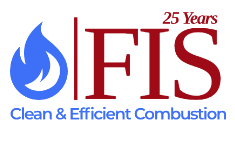Presentations
1. Better Fired Heaters Specifications Pay Off AFRC Meeting
Sep, 2018 Salt Lake City
Presented by
Ashutosh Garg - Furnace Improvements Services
Fired heaters are one of the most important equipment in refinery. Every refinery has 30-60 heaters. They are the major consumers of energy and are mostly overfired due to fouling of upstream heat exchangers. This leads to high tube metal temperature and coking of heater tubes which ultimately affects its run length.
The typical refinery contains one or more crude oil heaters. To get the most out of these crude heaters, good design is the first requisite. Many factors can improve the crude heater design which can increase the run lengths of the crude heaters.
We have compared one 100 MMBtu/hr crude heater on the following different basis:
• Heater Configuration: Vertical cylindrical and cabin style heater. Cabin heaters have more advantages over VC heater but at higher cost.
• Heat Flux: Heat transferred per unit area of the tube. High heat flux leads to higher volumetric heat release.
• H/D Ratio: Reducing the firebox height means the firebox is cheaper but larger fireboxes are better for uniform heat distribution.
• Tube Sizes and Passes: The number of passes determines coil size in a crude heater. More tube passes lead to smaller tube size. Multiple passes may not receive uniform heat absorption. Fewer tube passes lead to larger tube size which is more reliable but at a higher cost.
• Flue Gas Temperature Approach: The difference between the flue gas going out and the process fluid coming in. The higher the approach the lesser is the cost.
2. Improving Shale Oil Crude Heater Performance Refining India
24-25 Sep, 2018 New Delhi
Presented by
Ashutosh Garg - Furnace Improvements Services
Refiners have started processing shale crudes in their refineries. One of the major issues faced by the refineries in the run length of the crude heater.
One of the refineries in Texas started processing shale crudes in their heater and the run length of the heater came down from 5 years to less than 3 months. The refinery approached Furnace Improvements to look at the crude heater and recommend improvements in the crude heater to extend the run length. FIS reviewed the crude heater design, analyzed the operating data and carried out CFD modeling of the existing heater.
Based on this analysis, FIS recommended modifications on the fire side and the tube side. The tube side modifications were not carried out due to the cost and changes involved. FIS carried out CFD modeling of the fire side modifications and showed improvements to the client. Later FIS implemented the modifications on the fire side and the run length has gone up by 6 times to about one and a half year. It is estimated that the tube side modifications would have restored the heater five year run length.
We will present the issues being faced and improvements that were made to the heater in this presentation.
3. Coker Heaters Performance Improvement
7-11 May, 2018 Sugar Land, TX
Presented by
Donald Tran - LyondellBasell Houston Refining &
Ashutosh Garg - Furnace Improvements
Coker heaters are one of the most critical heaters in refineries. The feed is heated to a very high temperature. Run length is one of the important factors for coker heaters. Furnace Improvements has worked on several coker heaters in the past 10 years and would like to present their experience with coker heaters revamping and performance improvements. Furnace Improvements has inclined firing technology (patented) and smart stack dampers (patent pending) for fired heaters performance improvements. We have seen a substantial reduction in tube metal temperatures by inclining the burners towards the wall in double-fired coker heaters. Extensive CFD modelling has been done on coker heaters. We will present a case study for coker heater performance improvement.










